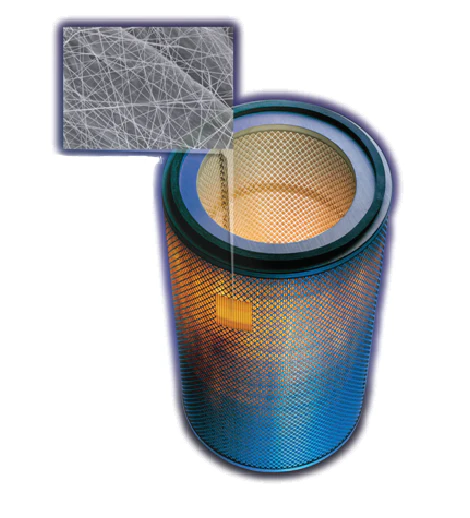5 Ways To Keep Your Dust Collector Filter Clean
Are you tired of constantly replacing your dust collector filter? Did you know that keeping your filter clean can save you money and improve the air quality in your workspace? Dust collector filters are an essential component for any woodworking or manufacturing operation. In this blog post, we will discuss five easy ways to keep your dust collector filter clean and functioning at its best. So let's get started!
What is a Dust Collector Filter?
A dust collector filter is a device that captures and removes particles from the air in your workspace. It is an essential component for any woodworking or manufacturing operation, as airborne debris can pose health risks to workers and damage machinery over time.
Dust collector filters work by using a combination of mechanical and electrostatic forces to trap particles before they can be released back into the environment. The air containing dust passes through a series of filters that capture larger particles, while smaller ones are trapped by charged plates.
There are several different types of dust collector filters available, each with its own strengths and weaknesses. Some popular options include pleated filters, baghouse filters, cartridge filters, and cyclone separators.
Investing in a high-quality dust collector filter is crucial for maintaining a safe and efficient workplace. By keeping airborne particles under control, you can protect yourself and others from potential health hazards while also extending the lifespan of your equipment.
How do Dust Collector Filters Work?
Dust collector filters work by trapping and removing dust particles from the air. As contaminated air enters the dust collector, it flows through a series of filter bags or cartridges that capture the dust particles.
The process begins when larger particles are caught in the outer layer of the filter media, while smaller particles penetrate further into the media until they reach layers with smaller pores to trap them. This multi-layer filtration system allows for maximum efficiency in capturing all types and sizes of airborne contaminants.
Once trapped, clean air is then released back into the workspace. The captured dust can be disposed of through various methods depending on your specific industry and regulations.
It's important to note that over time, as more and more particles accumulate on the filter surface, airflow decreases which can lead to decreased performance and increased energy consumption. That's why regular cleaning or replacement of your dust collector filters is crucial for optimal functionality.
What are the Different Types of Dust Collector Filters?
When it comes to dust collector filters, there are several types available on the market. The type of filter you need will depend on your specific needs and the type of dust and debris that your equipment generates.
One common type of dust collector filter is a bag filter. Bag filters are made from fabric or felt materials and work by trapping particles as they pass through the material. These filters are easy to install and maintain, making them a popular choice for many industries.
Another popular option is cartridge filters, which use pleated paper or synthetic media to capture dust particles. Cartridge filters have a larger surface area than bag filters, allowing them to capture more particles before needing replacement.
Cyclone separators are another option for those dealing with large volumes of heavy or abrasive materials. These systems use centrifugal force to separate out heavier debris before it reaches the filtration system.
Electrostatic precipitators utilize an electric charge to attract charged particles within the air stream onto collection plates where they can be easily removed.
Choosing the right type of dust collector filter is essential in ensuring optimal performance and longevity for your equipment while maintaining safe working conditions for employees.
How to Clean a Dust Collector Filter
Cleaning your dust collector filter is an important step in maintaining the efficiency of your equipment. Neglecting to do so can lead to decreased performance, higher energy costs, and even potential safety hazards. Here are some tips on how to clean your dust collector filter.
Firstly, ensure that you turn off and unplug the machine before beginning any cleaning activities. Next, remove the filter from the dust collector unit and use a soft brush or compressed air to remove excess debris from the surface of the filter.
Once you have removed as much debris as possible, fill a container with warm water and add a mild detergent or cleaning solution. Soak the filter for several minutes before rinsing it thoroughly with clean water.
After rinsing it out completely, allow it to dry fully before reassembling it back into its proper place within your dust collector unit. It's essential not to rush this process; make sure that all components are entirely dry before turning on your equipment again.
Regular maintenance of your dust collector filter will help prolong its lifespan while keeping everything working efficiently and safely at all times.
Conclusion
Keeping your Wrentham dust collector filter clean is essential for ensuring a healthy and safe environment. Dirty filters can not only decrease the efficiency of your equipment but also pose serious health hazards to you and your staff.
Regular inspection and maintenance of your industrial filters will save you money by reducing repair costs while maintaining excellent performance levels. By following our tips to maintain a clean dust collector filter, you'll be able to increase its lifespan whilst keeping any safety risks at bay - so start implementing these solutions today!




Comments
Post a Comment